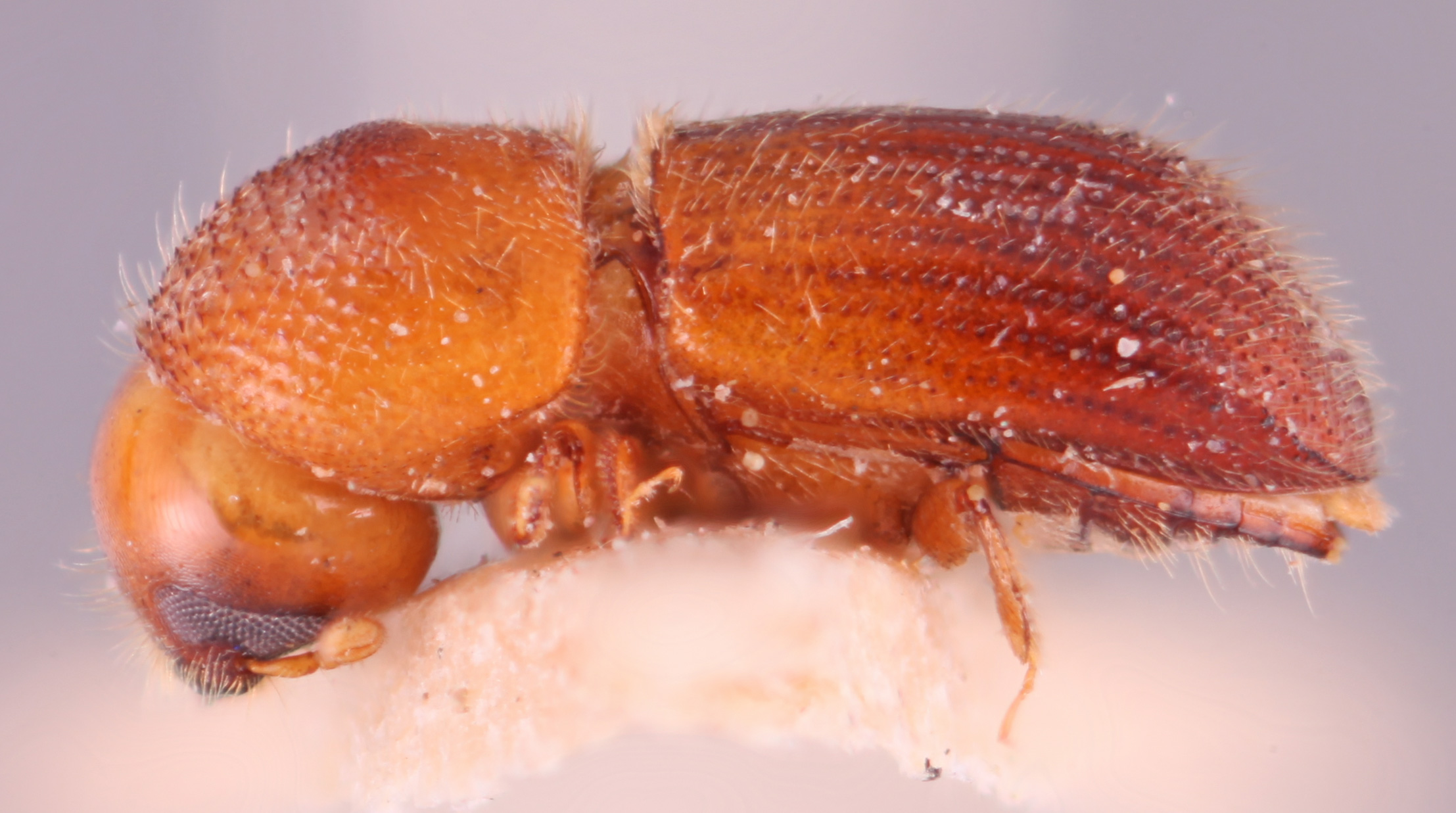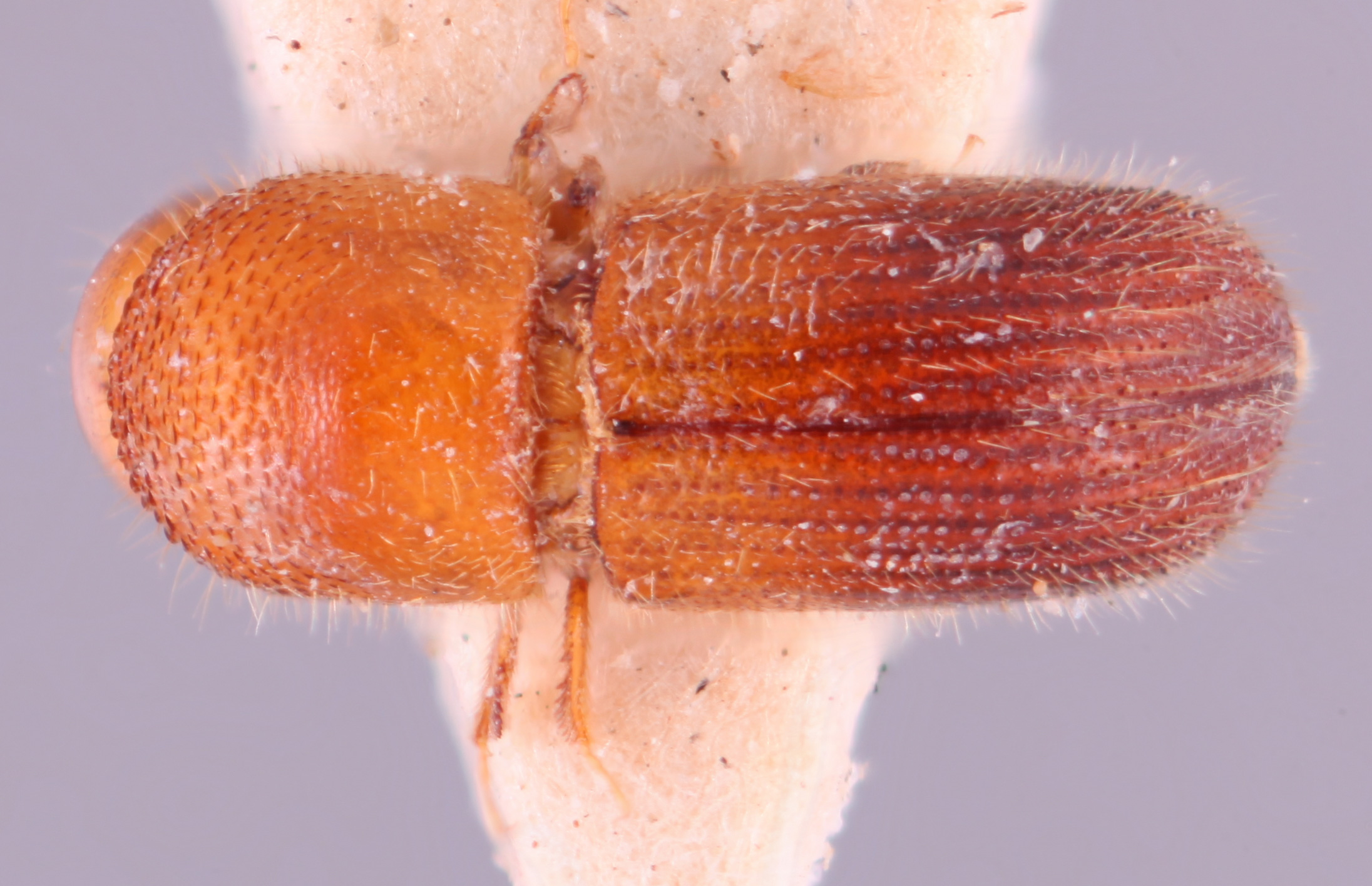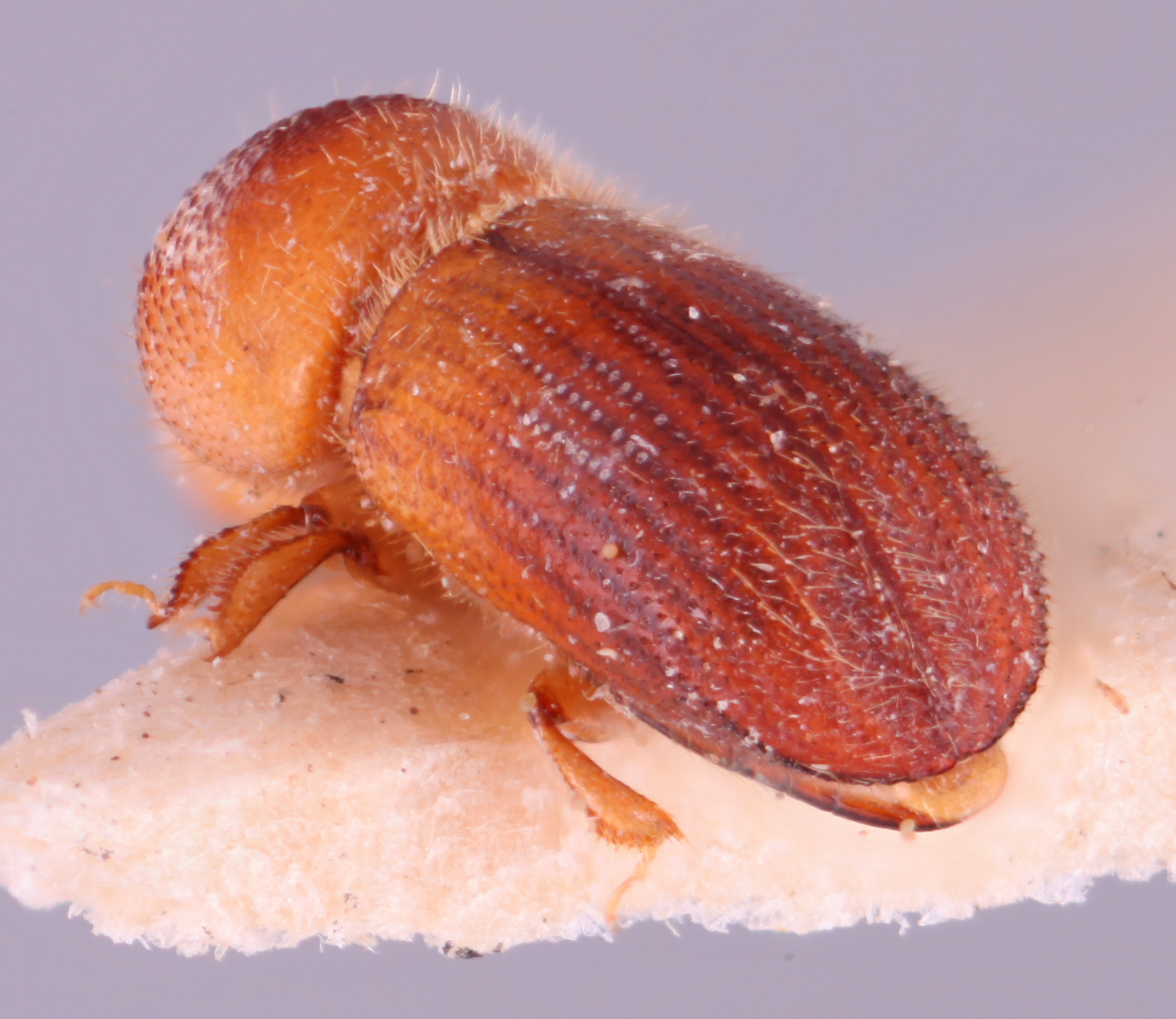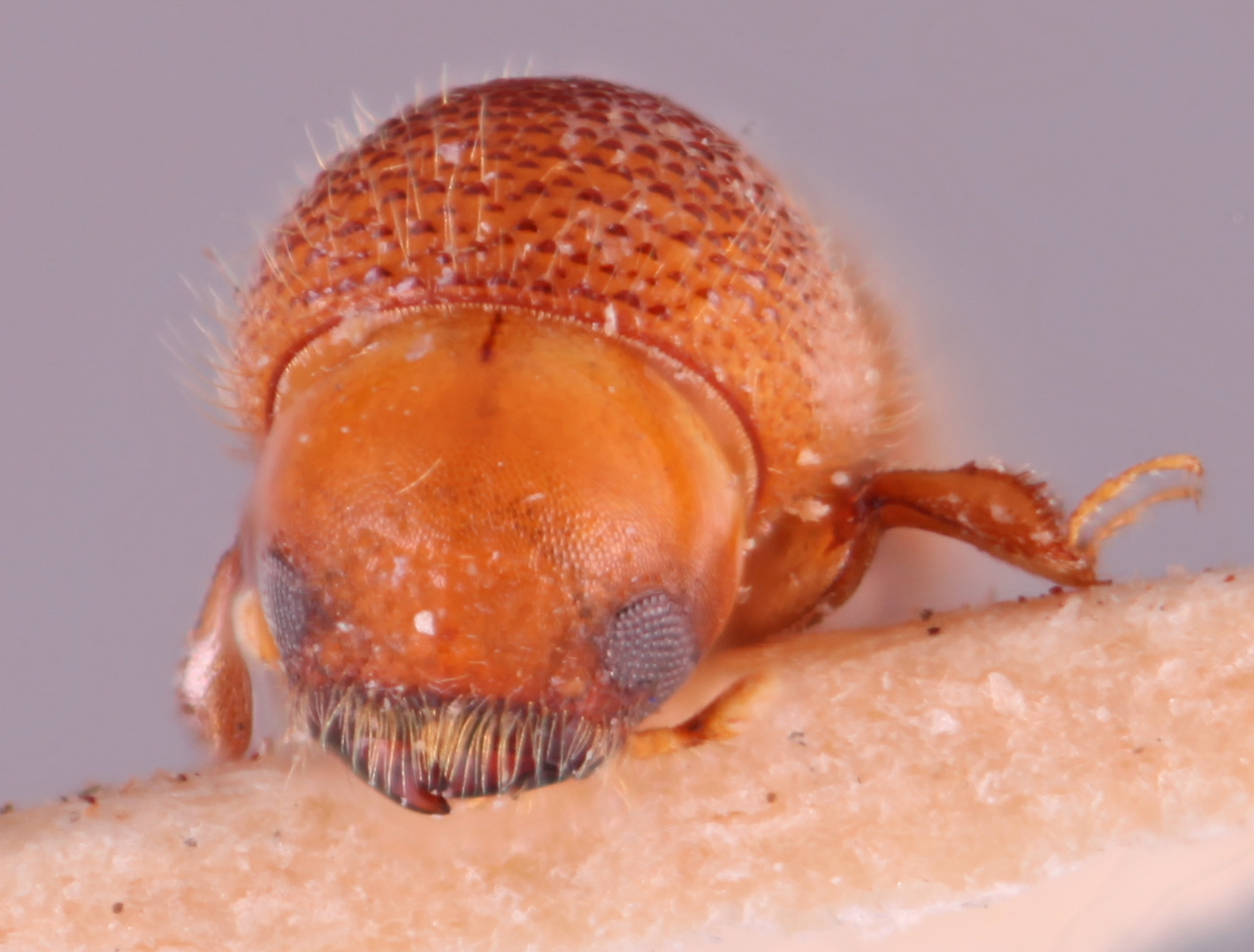Microperus chrysophylli
|
Microperus chrysophylii cotype lateral; S.M. Smith |
|
Microperus chrysophylii cotype dorsal; S.M. Smith |
|
Microperus chrysophylii cotype declivity; S.M. Smith |
|
Microperus chrysophylii cotype frontal; S.M. Smith |
Taxonomic history
Xyleborus chrysophylli Eggers, 1930: 205.
Coptodryas chrysophylli (Eggers): Wood and Bright, 1992: 823.
Microperus chrysophylli (Eggers): Saha and Maiti, 1996: 824.
Diagnosis
2.6−2.7 mm long (mean = 2.68 mm; n = 5); 2.6−2.7 times as long as wide. This species is distinguished by the elytralelytral:
pertaining to the elytra
discdisc:
the flat central upper surface of any body part (e.g. pronotum and elytra) flat; elytralelytral:
flat; elytralelytral:
pertaining to the elytra
declivitydeclivity:
downward slope of either the pronotum or elytra
 long, gradual; large size; declivitaldeclivital:
long, gradual; large size; declivitaldeclivital:
pertaining to the elytral declivity
interstriae 2 lacking granulesgranule:
a small rounded protuberance, like grains of sand
 on declivitaldeclivital:
on declivitaldeclivital:
pertaining to the elytral declivity
face; declivitaldeclivital:
pertaining to the elytral declivity
face strongly shagreenedshagreened:
covered with a closely-set roughness, like shark skin 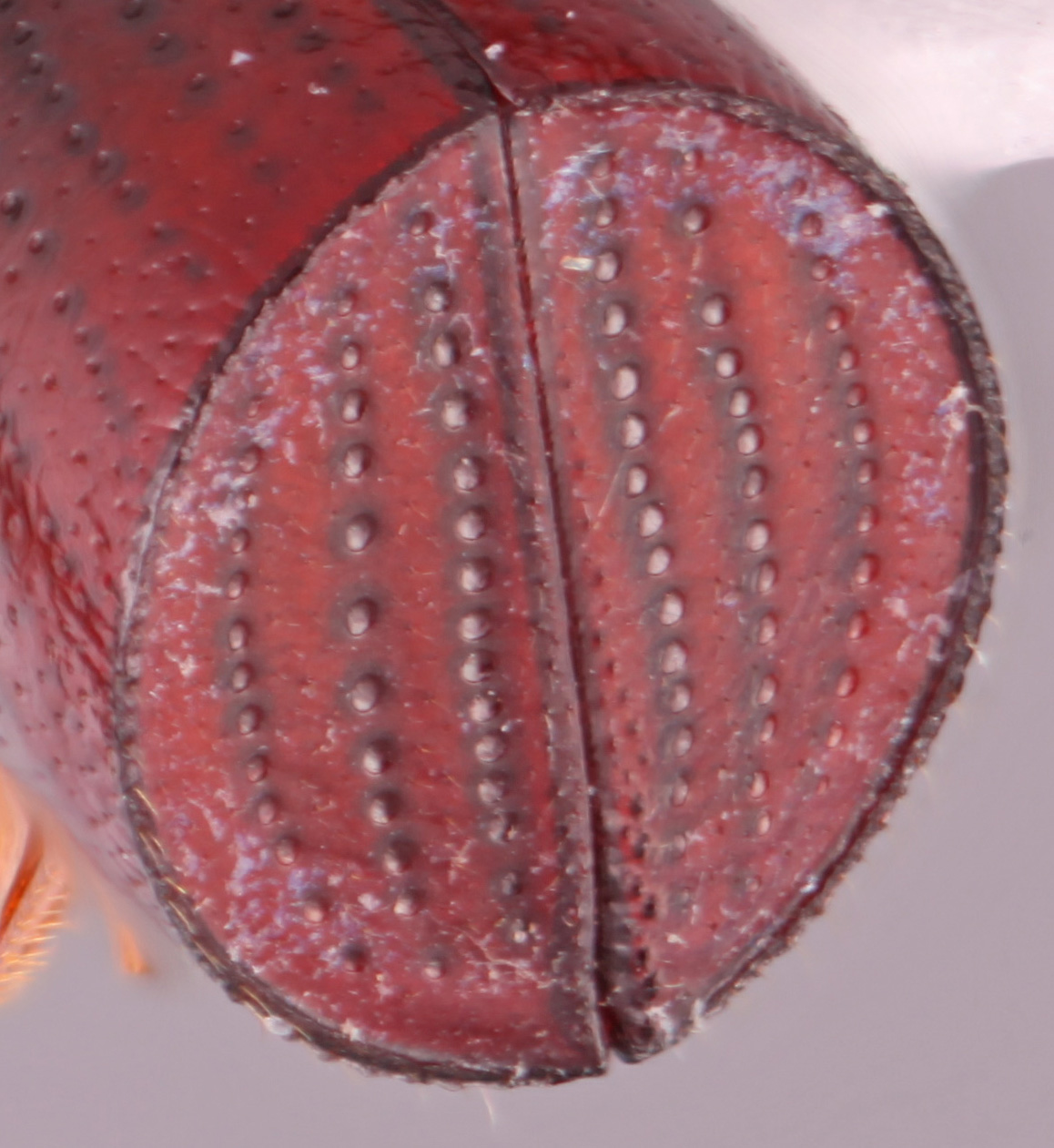 , weakly impressedimpressed:
, weakly impressedimpressed:
a depression in a surface
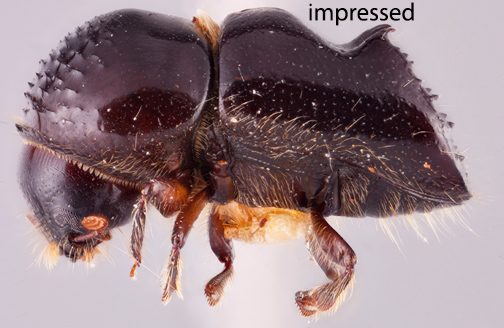 along striaestria:
along striaestria:
punctures in rows, which may or may not be impressed to make grooves 2 and interstriaeinterstria:
2 and interstriaeinterstria:
longitudinal spaces along the elytra between the striae, which is not as<br />
impressed and bear smaller punctures.
 2; declivitaldeclivital:
2; declivitaldeclivital:
pertaining to the elytral declivity
strial punctures small, indistinct; posterolateralposterolateral:
relating to end of the side part/portion
 costacosta:
costacosta:
elevated ridge that is rounded at its crest, not necessarily with sharp appearance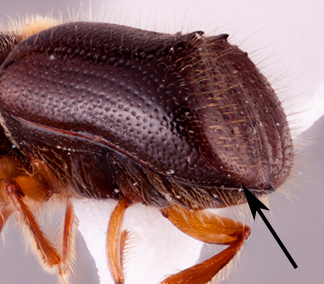 granulate; interstriaeinterstria:
granulate; interstriaeinterstria:
longitudinal spaces along the elytra between the striae, which is not as<br />
impressed and bear smaller punctures.
 densely covered with long, erecterect:
densely covered with long, erecterect:
pertaining to setae that have their apices directed away from the body and appear straight
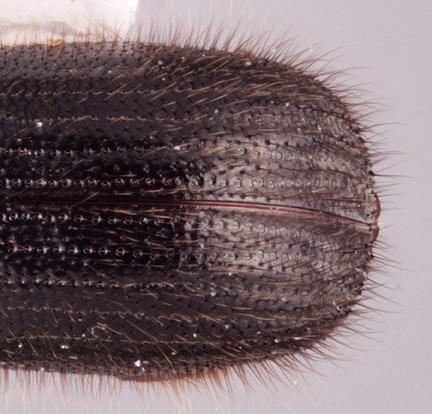 , hair-like setaeseta:
, hair-like setaeseta:
small hair-like or scale-like structure
, setaeseta:
small hair-like or scale-like structure
longer than two interstrial widths; striaestria:
punctures in rows, which may or may not be impressed to make grooves setose, setaeseta:
setose, setaeseta:
small hair-like or scale-like structure
short, semi-recumbentsemi-recumbent:
pertaining to setae that are in between erect and recumbent, usually at a 45 degree angle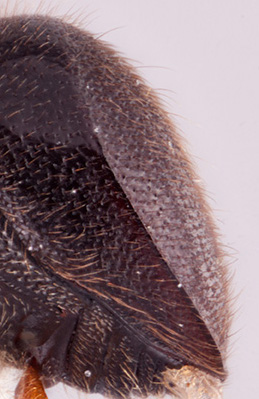 , as long as strial width.
, as long as strial width.
This species strongly resembles M. corporaali and can be distinguished by the less strongly sulcatesulcate:
deeply furrowed or grooved
elytralelytral:
pertaining to the elytra
declivitydeclivity:
downward slope of either the pronotum or elytra
 and declivital strial punctures very large, distinct.
and declivital strial punctures very large, distinct.
May be confused with
Microperus corporaali and M. fulvulus
Distribution
Bangladesh, China (Guangxi, Yunnan), India (Assam, West Bengal), Thailand
Host plants
recorded only from Chrysophyllum (Sapotaceae) and Cinnamomum (Lauraceae) (Maiti and Saha 2004Maiti and Saha 2004:
Maiti PK, Saha N. 2004. Fauna of India and the adjacent countries. Scolytidae: Coleoptera (bark and ambrosia beetles). Vol. 1. Part 1. Zoological Survey of India, Kolkata, 268 pp.)
DNA data
specimens not available for sequencing

